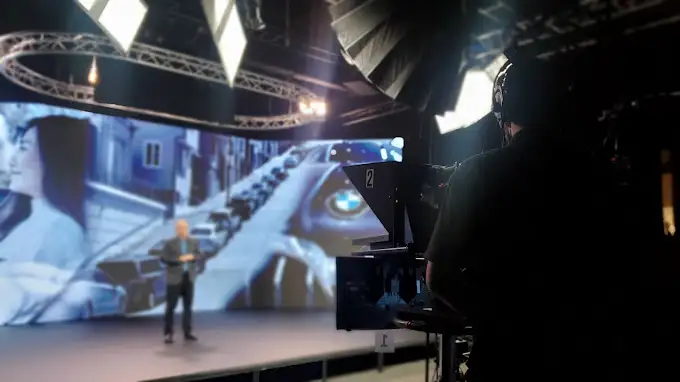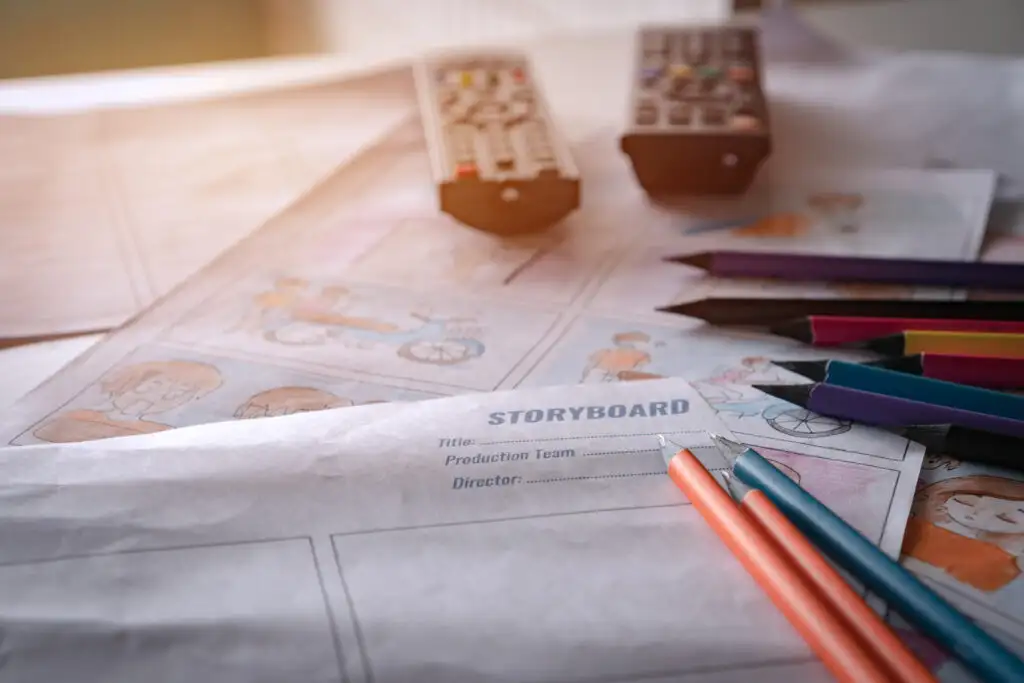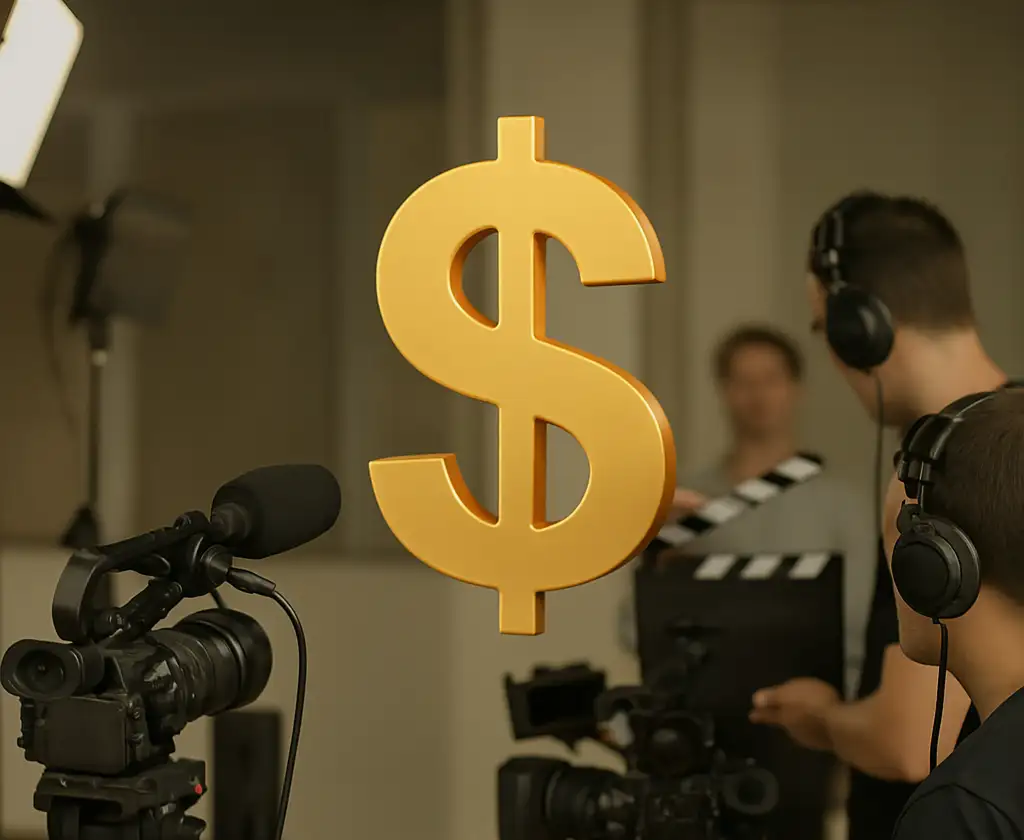By: Cecilia Gangi
Creating a video commercial is a detail-oriented and exciting journey that transforms a simple idea into a captivating visual story. From the initial concept to the final broadcast or video, every step is planned and executed to ensure that the message resonates with the target audience. Let’s take a closer look behind the scenes to understand the process of video commercial production.
Pre-Production:
Pre-production is all about preparation. This stage involves discussing who is on camera, scouting locations, arranging props, and finalizing the shooting schedule. The production team as well as project managers work on logistics, securing permits, and organizing equipment. Pre-production is crucial as it lays the groundwork for a smooth and efficient shoot. Let’s take a closer look into what pre-production really entails.
1. Concept Development:
Initially, every great video commercial starts with a creative idea. The concept development phase involves brainstorming sessions where the creative team discusses various ideas and themes. This stage is crucial as it sets the tone and direction for the entire project, thinking outside of the box is important during this step. The goal is to come up with a concept that not only aligns with the specific brand’s message but also engages and entertains the audience.
2. Scriptwriting:
Once the concept is finalized between the creative team and client, the scriptwriting phase begins. A well-written script is the backbone of any successful video commercial. It outlines the narrative, dialogues, and actions that will take place in the commercial. The scriptwriter collaborates with the creative director and the client to ensure the script accurately reflects the brand’s voice and objectives.
3. Storyboarding:
Storyboarding is a huge part of any production, and is where the visual planning of the commercial takes shape. This phase involves creating a series of sketches that represent each scene of the commercial. Storyboards help the production team visualize the flow of the commercial, plan camera angles, and determine the pacing of the story. It serves as a blueprint for the shoot, ensuring everyone is on the same page.
4. Framing:
Framing is a crucial step before a commercial video production that sets the foundation for how the visual story will unfold. It involves determining the composition of each shot, which directly influences the audience’s perception and emotional response. During the pre-production phase, the director and cinematographer meticulously plan the framing to ensure that every element within the frame contributes to the narrative and aesthetic appeal. This includes deciding on camera angles, shot sizes, and movements that align with the storyboard and script. Proper framing enhances the visual impact of the commercial, guiding the viewer’s attention to key messages and creating a seamless, engaging experience.

Production:
During the production phase of making a video production commercial, the vision outlined in the pre-production phase comes to life through meticulous planning and execution. This stage involves a coordinated effort among various teams, including directors, cinematographers, sound engineers, and production assistants.
1. Set-Up:
The process begins with setting up the location, which may include securing permits, arranging set decorations, and setting up lighting to ensure optimal visual quality. The cast and crew are assembled, and rehearsals are conducted to fine-tune performances and camera movements. On the day of the shoot, multiple takes of each scene are filmed from different angles to provide ample footage for the editing process. Sound recording is carefully managed to capture clear dialogue and ambient sounds, while additional elements like props and special effects are incorporated as needed.
2. Rolling Camera:
The director oversees the entire process, ensuring that the artistic vision is maintained and that the commercial effectively communicates the intended message. The director oversees the entire process, ensuring that the artistic vision is maintained and that the commercial effectively communicates the intended message. Throughout the shoot, attention to detail is paramount, with adjustments being made on the fly to address any unforeseen challenges. This phase is both dynamic and collaborative, requiring effective communication and problem-solving skills to ensure that the final product meets the high standards set during pre-production.
3. Client Role:
The client’s role during this stage is crucial for ensuring the commercial aligns with their brand vision and objectives. The client often attends the shoot or designates a representative to provide real-time feedback on various aspects of the production, such as the performance of actors, the setting, and adherence to the storyboard. They may also review and approve key elements as they are filmed, ensuring that the final footage matches their expectations. Additionally, the client collaborates with the director and production team to make decisions on any necessary changes or adjustments, providing insights that help maintain brand consistency. Their involvement helps to avoid any major revisions later in the process, ensuring the project stays on track and within budget. Overall, the client’s active participation is essential in shaping the commercial to ensure it effectively conveys the intended message and achieves the desired impact.
Post-Production:
The post-production stage of making a commercial is where the raw footage is transformed into a polished final product. This process includes editing the video to ensure a cohesive narrative, adding special effects, graphics, and animations to enhance visual appeal, and fine-tuning the audio with sound effects, music, and voiceovers. Color correction and grading are also performed to achieve the desired visual tone. Finally, the commercial undergoes a thorough review and any necessary revisions before it is ready for distribution. This stage is crucial for ensuring the commercial is engaging, professional, and aligns with the client’s vision.
Review and Feedback:
After the initial edit is complete, the commercial is reviewed by the creative team and the client. Feedback is gathered, and revisions are made to ensure the final product meets everyone’s expectations. This stage may involve several rounds of edits until the commercial is polished and ready for broadcast.
Once the shooting wraps up, the post-production phase begins. This stage involves editing the footage, adding special effects, and enhancing the audio. One of many editors piece together the best takes, creating a cohesive and compelling story. Color grading and sound design are also crucial elements of post-production, ensuring the commercial looks and sounds professional.
An example from TriVision Studios is a recent client, Elephant Insurance. Since this video commercial production was shot on location, TriVision assisted in script writing, location scouting, and casting. Our pre-production process began with concept and storyboarding where both our creative and video production teams came together to create two 30-second and two 15-second commercials.
Distribution:
The final step in the video commercial production process is distribution. In the distribution stage of making a commercial, the finished video is strategically released to reach the target audience. This involves selecting the appropriate channels and platforms, such as TV, social media, websites, or streaming services. The distribution team ensures the commercial is formatted correctly for each platform, schedules the airing times for maximum impact, and monitors the campaign’s performance. This stage is crucial for maximizing the commercial’s reach and effectiveness, ensuring it engages the audience and drives the desired results.
That's a Wrap!
From storyboards to your TV screens, the production of a video commercial is a complex and rewarding process. Each phase requires careful planning, creativity, and collaboration to ensure the final product not only captures the brand’s message but also resonates with the audience. At TriVision, we take pride in our meticulous approach to video commercial production, ensuring every detail is perfect, and the final product exceeds expectations.
If you want to create a captivating video commercial for your brand, contact us today to see how we can bring your vision to life.










